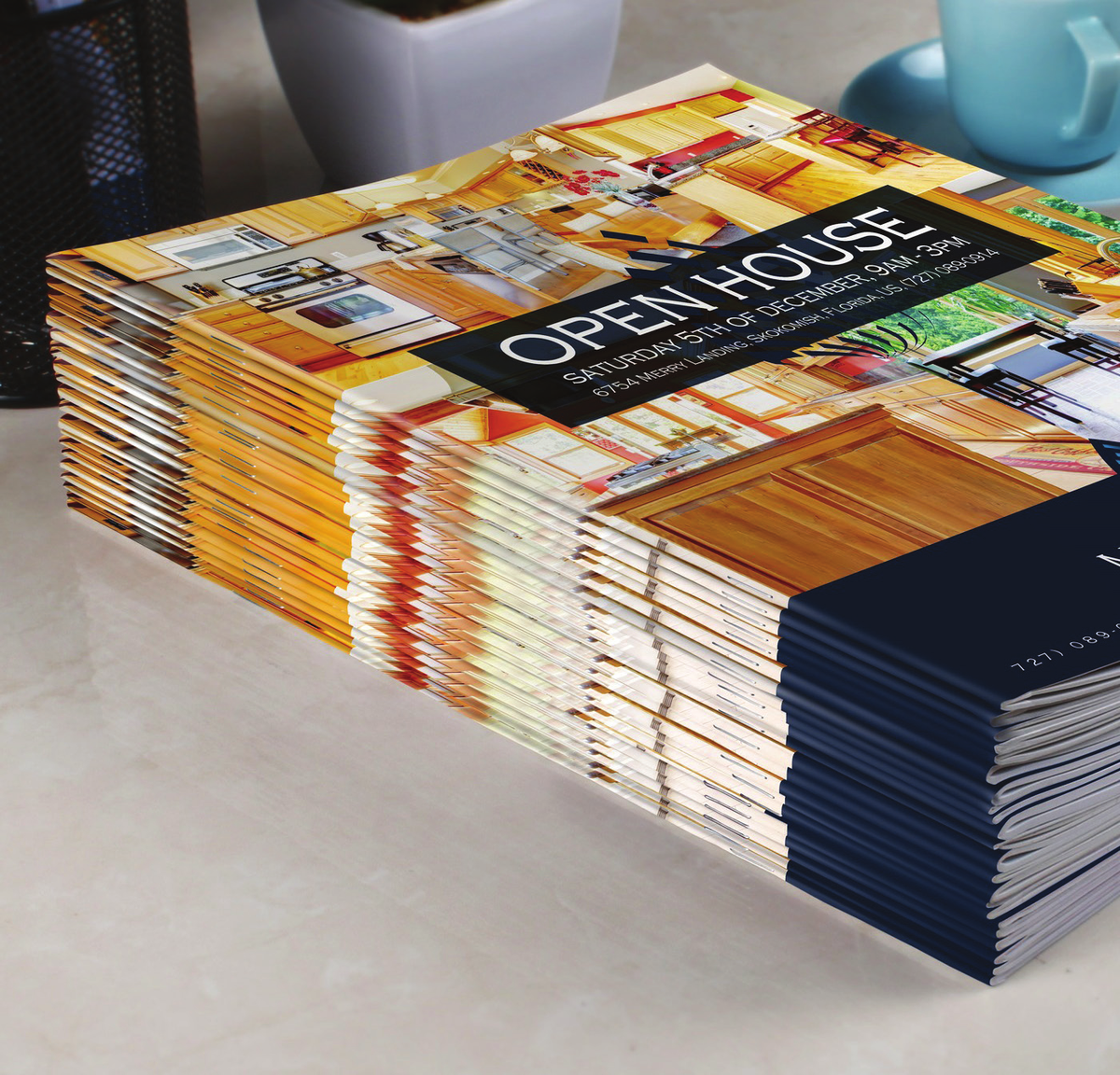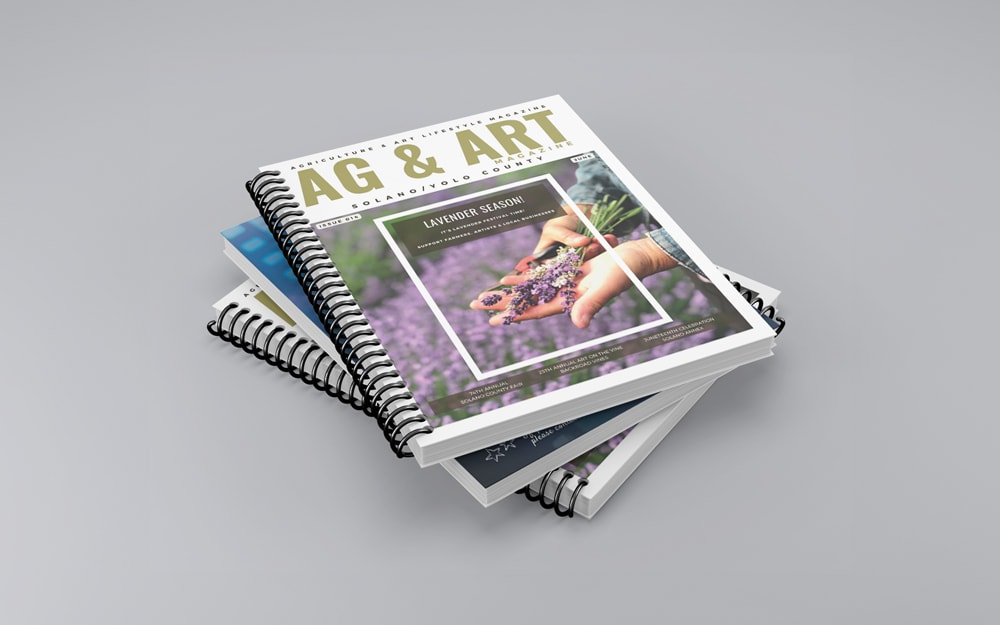Exploring Industry Trends That Are Shaping the Future of Booklet Printing
Exploring Industry Trends That Are Shaping the Future of Booklet Printing
Blog Article
The Important Guide to Recognizing Booklet Printing Options and Techniques
The process of pamphlet printing includes multiple factors to consider that can substantially influence the end product. From picking the appropriate layout and size to comprehending the nuances of binding methods, each choice plays an essential duty. Furthermore, factors such as paper supply and printing strategies additional affect the efficiency of the booklet. As one browses these options, it comes to be critical to comprehend how they adjoin and what that indicates for the total outcome.
Recognizing Booklet Layouts and Sizes
When considering brochure printing, recognizing the different formats and dimensions offered is vital for attaining the wanted presentation. Booklets can be created in countless formats, consisting of saddle-stitched, spiral-bound, and perfect-bound, each offering unique benefits. Common dimensions range from basic letter (8.5 x 11 inches) to smaller alternatives like A5 (5.8 x 8.3 inches), enabling versatility based upon content and target audience.Selecting the suitable dimension can affect both the layout and visitor interaction. Bigger dimensions might match aesthetically driven content, while smaller styles may be more straightforward and mobile. Additionally, the number of pages impacts the selection of binding approach, as thicker pamphlets may require sturdier bindings. Eventually, comprehending these elements enables an extra customized strategy, ensuring that the end product aligns with the intended message and aesthetic, enhancing the overall efficiency of the communication.
Selecting the Right Paper Stock

Binding Approaches: Factors To Consider and choices
When it pertains to binding techniques for booklets, several alternatives are readily available, each with distinctive benefits. Saddle stitch binding offers a cost-effective option for thinner brochures, while perfect binding methods offer a more refined look for thicker magazines. Wire-O binding sticks out for its resilience and simplicity of use, making it ideal for papers that require flexibility.
Saddle Stitch Binding
Saddle stitch binding provides a practical and affordable option for putting together pamphlets, making it a preferred choice amongst publishers and businesses. This binding method involves folding sheets of paper in half and stapling them along the fold line, producing a orderly and neat appearance. Usually suitable for brochures with a lower page matter, saddle stitching is ideal for publications, brochures, and instructional materials. The simplicity of this technique allows for quick manufacturing and is usually preferred for marketing products or short runs. However, it is important to note that saddle stitch binding may not be suitable for thicker pamphlets, as the spine may not stand up under enhanced weight. Generally, it remains a dependable alternative for lots of printing jobs.
Perfect Binding Strategies
Perfect binding is an extensively used strategy that offers a specialist and polished surface to pamphlets and publications. This technique entails gluing the pages with each other at the back utilizing a solid adhesive, enabling a clean side and the capacity to hold a larger variety of web pages compared to saddle stitching. Perfect binding is especially ideal for thicker booklets, such as directories and yearly reports, where a strong, level spine is desired. Furthermore, it supplies the option for a printed cover that can be created to boost visual appeal. Considerations such as page count, paper weight, and the intended use of the brochure ought to be taken right into account, as they can impact longevity and total quality.
Wire-O Binding Options
Wire-O binding, known for its resilience and versatility, provides an excellent alternative for booklets that need easy web page turning and an expert look. This binding approach employs a series of metal loops that hold pages securely, allowing them to lie level when open. It is specifically suitable for presentations, brochures, and manuals because of its robust nature. Wire-O binding is available in numerous shades and diameters, suiting various page matters and densities. Additionally, it allows the addition of covers and tabs, boosting the pamphlet's overall visual. Factors to consider for Wire-O binding include the selection of cable color, the dimension of the loops, and the level of personalization desired, every one of which can exceptionally affect the end product's appearance and functionality.
Digital vs. Offset Printing: Which Is Best for You?
When picking a printing technique for pamphlets, comprehending the differences in between digital and balance out printing is important. Digital printing makes use of contemporary innovation to produce high-quality prints swiftly and affordably, making it suitable for short runs or jobs requiring quick turn-around times. It permits modification, providing the capability to publish on-demand with very little waste.In comparison, offset printing is a standard method that stands out in producing large amounts with consistent top quality. It involves transferring ink from a plate to a rubber blanket, after that to the paper, which leads to vibrant colors and accurate details. Nonetheless, balance out printing normally calls for longer setup times and is much more economical for larger volumes.Ultimately, the choice between electronic and counter printing relies on job demands, budget, i thought about this and wanted quantity. For tiny, time-sensitive jobs, electronic could be the very best option, while offset might be better for larger, high-quality productions.

Designing Your Brochure: Tips and Finest Practices
When developing a booklet, mindful interest to layout, font option, and color use can substantially boost its efficiency. A well-structured layout overviews the visitor's eye, while appropriate typefaces ensure readability and convey the wanted tone. Furthermore, effective use color can evoke emotions and emphasize key information, making the general design much more impactful.
Picking the Right Design
Exactly how can one properly pick the right design for a brochure? It is essential to examine the booklet's function and target audience. A clean, organized format enhances readability and involvement. Utilizing a grid system can help in aligning aspects continually, producing a specialist appearance. Furthermore, including visual pecking order via varying sizes and Extra resources positionings of images and text can lead the reader's eye and highlight crucial information. It is likewise crucial to leave enough white space, which stops congestion and enables better focus. Lastly, examining different layouts with mock-ups can supply understanding right into how the design does in real-world circumstances, ensuring that the final product satisfies both visual and practical needs.
Choosing Suitable Font Styles
A well-chosen font can greatly improve the general style of a brochure, matching the design and strengthening the content's message. The selection of fonts should think about readability, specifically for body message, as it guarantees the info is easily accessible to all visitors. Sans-serif font styles are typically liked for digital formats, while serif typefaces can provide a standard feel in published products. It's a good idea to limit font selections to 2 or three to maintain aesthetic coherence. Additionally, typeface dimension plays an essential duty; headings must be not overwhelming but distinctive, while body text need to be comfy for reading. When selecting typefaces, placement with the booklet's motif and target audience is important for reliable communication and visual charm.
Effective Use Color
Color functions as a powerful tool in pamphlet design, forming perceptions and directing viewers emotions. It can evoke sensations of trust, calmness, or exhilaration, relying on the hues selected. Designers must take into consideration color theory principles, guaranteeing that the selected scheme aligns with the pamphlet's message and target audience. For example, utilizing warm colors like red and orange can produce necessity, while cooler tones like blue and environment-friendly foster tranquility.Additionally, contrast plays a crucial duty; complementary shades can boost readability and aesthetic allure. Consistency in color usage throughout web pages better reinforces brand name identification and communication. Eventually, efficient color implementation not just records focus however likewise reinforces the booklet's purpose, making it an essential aspect of effective style.
Completing Touches: Coatings and Special Results
While several take into consideration the material and layout of a booklet one of the most click here to find out more important aspects, the finishing touches, such as coatings and unique impacts, play a vital role in boosting its general appeal. Coatings can give security and sturdiness, ensuring that the pamphlet stands up to wear and tear. Matte finishes supply an advanced, non-reflective surface, while shiny finishings can make shades appear even more lively and attractive. Special results, like embossing or foil marking, add a responsive dimension that can produce a memorable perception. These strategies can highlight certain locations, accentuating essential details or developing visual passion. Additionally, UV finish can provide a high-shine surface that boosts the general look.Together, these ending up touches not only improve the booklet's visual however also connect professionalism and reliability and focus to detail, eventually leaving a long-term influence on the visitor.
Price Considerations for Brochure Printing
Recognizing the various cost factors to consider for pamphlet printing is important for companies and businesses aiming to enhance their spending plans. Trick factors influencing expenses include the option of ink, paper, and binding techniques. Better materials, such as superior paper or specialized inks, normally raise the total expenditure. Additionally, the dimension and web page matter of the pamphlet play a significant role; larger booklets require more sources and time to produce.Another important factor to consider is the printing strategy, whether electronic or countered, as each has its very own prices framework and suitability for different quantities. Businesses should also consider layout expenses, which can vary based on complexity and making use of specialist solutions. Eventually, shipping and handling fees can include in the total amount, specifically for big orders. By examining these aspects, organizations can make enlightened choices that line up with their monetary capabilities while achieving the wanted high quality in their printed materials.
Regularly Asked Concerns
What Are the Environmental Influences of Brochure Printing?
The environmental influences of brochure printing include logging from paper manufacturing, carbon emissions from transport, and waste generation from disposed of products - Booklet Printing. Sustainable techniques, such as utilizing recycled paper and environmentally friendly inks, can minimize these impacts
How Can I Make Certain Shade Accuracy in My Brochure?
To guarantee color precision in a pamphlet, one ought to utilize adjusted screens, employ specialist color accounts, carry out examination prints, and choose top quality printing solutions that offer shade matching and proofing options for ideal results.
What Is the Normal Turnaround Time for Brochure Printing?
The typical turnaround time for pamphlet printing varies relying on the complexity and amount - Booklet Printing. Generally, it ranges from a couple of days to two weeks, influenced by variables such as printing approaches and finishing demands
Exist Minimum Order Quantities for Booklet Printing?

Can I Print Brochures in Several Languages?
Printing brochures in several languages is possible. Lots of printing services use alternatives for multilingual or multilingual formats, permitting reliable interaction. Mindful preparation warranties that create components fit different languages without jeopardizing readability or appearances. In addition, variables such as paper supply and printing methods additional influence the effectiveness of the booklet. When taking into consideration pamphlet printing, comprehending the different formats and sizes readily available is crucial for attaining the preferred presentation. When selecting a printing approach for brochures, understanding the differences in between digital and offset printing is essential. Furthermore, the dimension and page count of the pamphlet play a considerable role; bigger booklets call for even more resources and time to produce.Another crucial consideration is the printing method, whether digital or offset, as each has its very own prices structure and viability for different amounts. The environmental influences of brochure printing include logging from paper production, carbon exhausts from transportation, and waste generation from thrown out products.
Report this page